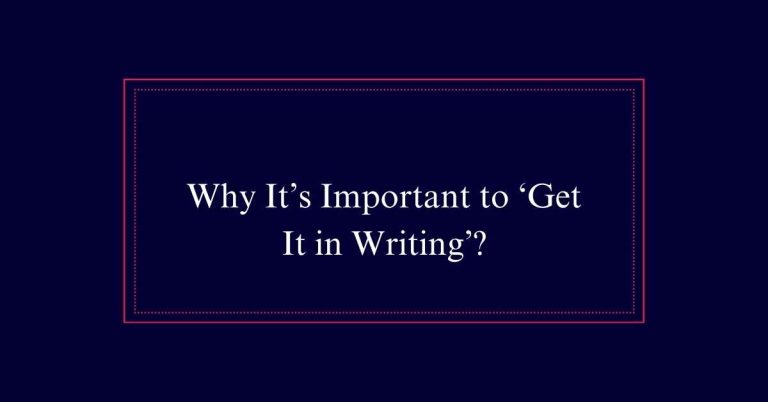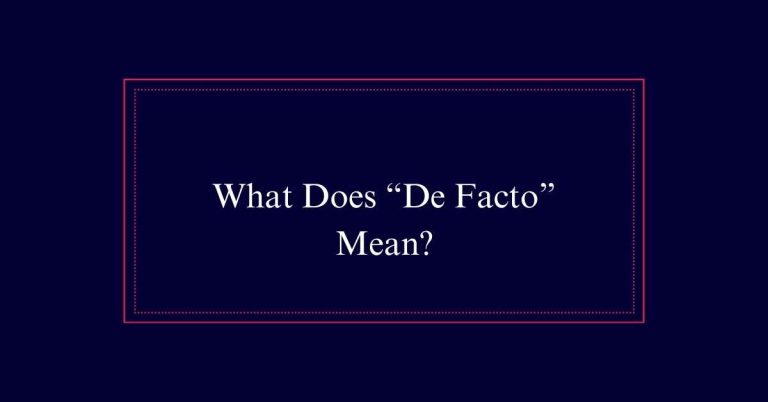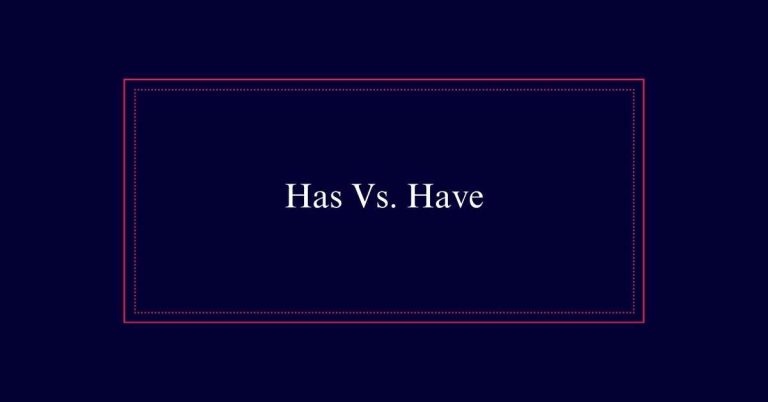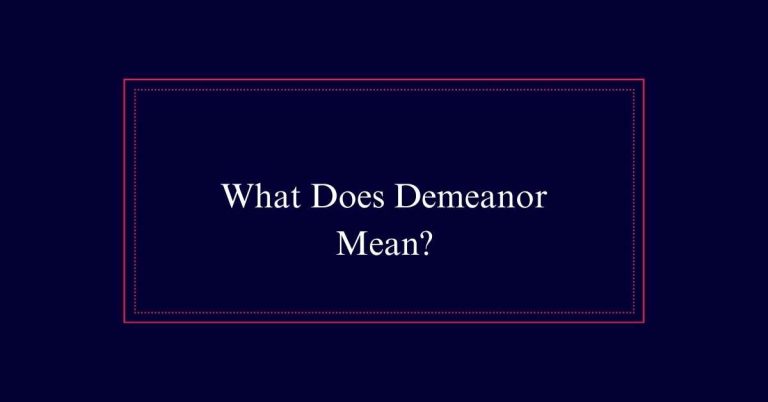Threw Vs. Through
‘Threw’ is the past tense of ‘throw’, describing an action completed in the past, such as “He threw the ball.” It is also used in phrasal verbs like ‘threw away.’ ‘Through’ is a versatile preposition and adverb indicating movement or passage from one side to another, as in “She walked through the door.” It can also denote completion or duration, enhancing clarity in communication.
Understanding Threw
‘Threw’ is the past tense of the verb ‘throw,’ which means to launch something with force through the air. It is used to describe an action that has already happened.
For example, ‘She threw the ball to her friend.’
The verb ‘throw’ is also part of several phrasal verbs, such as ‘throw away’ (to discard), ‘throw in’ (to add something extra), and ‘throw oneself into’ (to engage fully in an activity).
Understanding the use of ‘threw’ is essential, as it indicates a completed action. It is commonly used in everyday activities, sports, and various expressions.
Exploring Through
Through, a versatile preposition and adverb, signifies movement from one side to the other. It denotes passage or change, whether physical, temporal, or metaphorical.
For instance, ‘She walked through the park’ indicates movement across a space. In a temporal context, ‘We worked through the night’ means enduring a time period. Through can also imply by means of, as in ‘He succeeded through hard work.’
Its usage extends to describing processes, such as ‘They went through the documents.’ This word is essential in English for its ability to convey progress, completion, and connection.
Threw in Phrasal Verbs
In addition to its standalone usage, the word ‘threw’ plays a significant role in various phrasal verbs. These combinations often convey meanings distinct from the base verb ‘throw’.
For example, ‘threw away’ means to discard something. ‘Threw in’ implies adding something extra, while ‘threw up’ refers to vomiting. Each phrasal verb provides a unique context that alters the basic action of throwing.
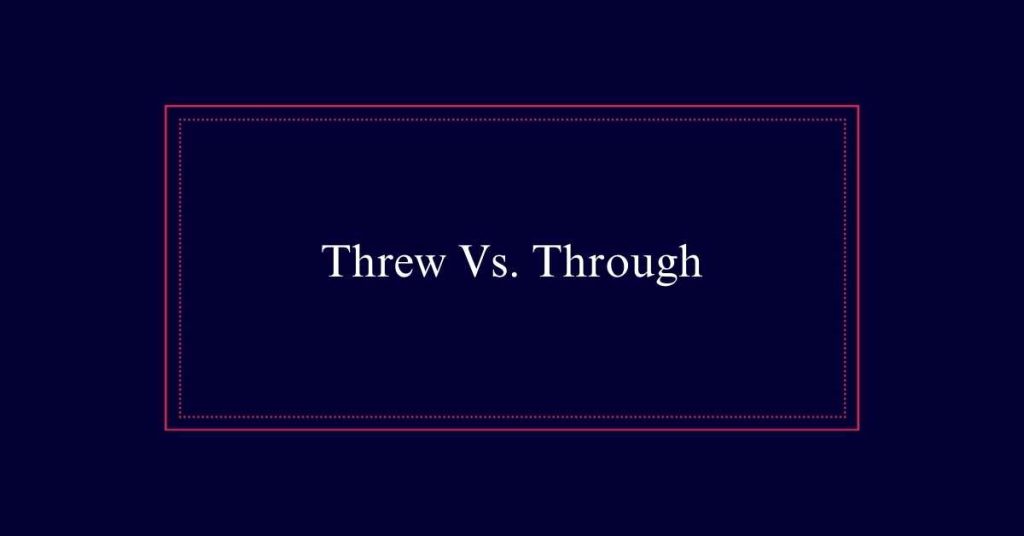
Mastering these phrasal verbs is crucial for effective communication. They enrich the language by adding specificity and nuance. Understanding the different phrasal verbs involving ‘threw’ guarantees clarity and precision in both writing and speaking.
Multiple Uses of Through
Beyond its basic function, ‘through’ has versatile applications in both physical and abstract contexts.
Physically, ‘through’ denotes movement from one side to another, such as walking through a door or driving through a tunnel. It also indicates completion, as in reading through a book or working through a problem.
Abstractly, ‘through’ can mean by means of, as in achieving success through hard work. It is also used to express duration, like staying up through the night. Additionally, ‘through’ can convey the idea of examination, such as going through documents.
Contextual Examples
Examining specific examples will illuminate the distinct uses of ‘threw’ and ‘through’ in various contexts. Consider the sentence: ‘A woman threw pumpkin seeds at Prime Minister Justin Trudeau.’ Here, ‘threw’ indicates the action of launching seeds.
In contrast, ‘SNL is going through the motions due to Clinton’s solid lead in polls’ uses ‘through’ to describe a process or state of being.
Additionally, ‘The court threw out the lawsuit’ demonstrates ‘threw’ in a legal context, meaning to dismiss.
Meanwhile, ‘Exploring the old city, I stop at a house with a throwback facade’ shows ‘through’ in describing a visual journey.
Threw in Everyday Life
Threw is a term frequently encountered in everyday activities such as playing sports, discarding items, and expressing emotions.
In sports, athletes throw balls, discs, or javelins to achieve objectives.
At home, people throw away trash, emphasizing the act of discarding unwanted items.
Emotionally, individuals may say ‘he threw a fit’ to describe someone expressing anger or frustration.
The word ‘threw’ captures the essence of an action completed in the past, often involving physical motion or emotional expression. Its usage spans various contexts, making it a versatile term.
Through in Transitions
Movements are often described using the word ‘progression,’ indicating progression or shift from one state to another. ‘Progression’ plays a vital role in illustrating shifts in both physical and abstract contexts. For instance, one might walk through a park or navigate through a complex problem. This word conveys the idea of moving within and emerging out of a phase or location.
In literature, ‘progression’ is used to depict character development, such as growing through experiences. It also signifies time changes, like working through the night.
Common Misuses
Confusion often arises between ‘threw’ and ‘through’ due to their similar pronunciation, leading to frequent misuse in both written and spoken language. This issue can be observed across various contexts, often resulting in unclear communication.
Below are three common misuses to be aware of:
- Important Verb Use: ‘He through the ball to his friend.’ (should be ‘threw’)
- Misplaced Preposition: ‘We walked threw the park.’ (should be ‘through’)
- Misuse in Phrasal Verbs: ‘She threw the project with determination.’ (should be ‘went through’)
Overcoming Confusion
Mastering the distinction between ‘threw’ and ‘through’ requires focused practice and contextual understanding. Confusion often arises due to their similar pronunciation. To overcome this, one must start by clearly understanding their definitions: ‘threw’ is the past tense of throw, while ‘through’ indicates movement across a space or time.
Context plays an essential role. For example, ‘He threw the ball’ clearly requires ‘threw’, while ‘She walked through the door’ necessitates ‘through’.
Regular practice, such as writing sentences and seeking feedback, can solidify this understanding. Additionally, reading diverse texts where both words are used can also enhance comprehension. Attention to context and consistent practice will mitigate common errors, ensuring correct usage.
Mastering Usage
To master the usage of ‘threw’ and ‘through,’ one must focus on context and practice diligently. Understanding their distinct roles in language is key.
‘Threw’ is the past tense of ‘throw,’ indicating an action involving forcefully sending something. ‘Through’ functions as a preposition or adverb, denoting movement from one side to another or the means by which something occurs.
Here are three tips to help you master their usage:
- Memorize Definitions: Recall that ‘threw’ is an action (past tense of throw) and ‘through’ indicates movement or means.
- Context Awareness: Always consider the sentence’s context to determine the correct word.
- Practice Regularly: Write sentences using both words to reinforce understanding and receive feedback.


